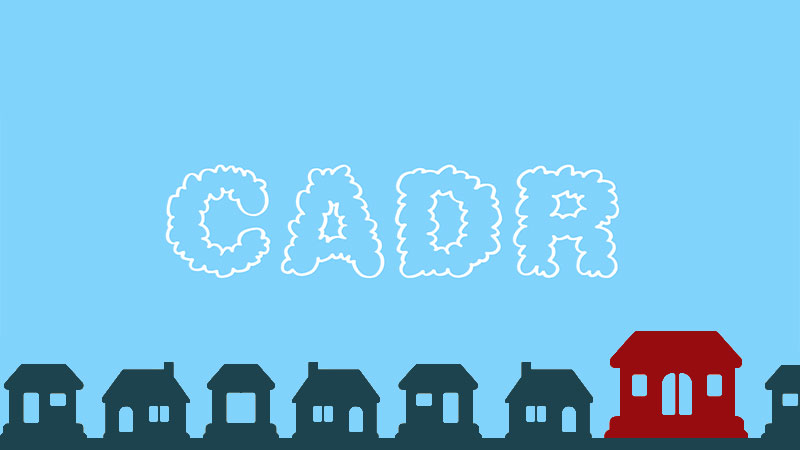In this article from the Behta Technology blog, we intend to prepare the most complete guide for buying an air purifier for you. Stay with us.
The air inside your home is often more polluted than the air outside. Since we spend most of our time indoors, exposure to poor indoor air quality puts us at risk for a number of diseases. Using an air purifier helps create cleaner and healthier air at home or at work. So you can enjoy better indoor air quality.
The truth is that the right air purifier will help you breathe better. Air purifiers are very efficient devices, but they have a price that cannot be ignored for the budget of a family, an individual or even a company. However, they are very capable devices for purifying the air and removing all the pollutants in the air. If you choose the right air purifier, they can be an incredible asset to your health.
Buying an air purifier is something that requires your full attention. It is important to understand the current state of technology and what the market has to offer. Therefore, it is important to increase your knowledge and learn the difference between different models of air purifiers. If you want complete satisfaction, buying such a device without thorough research is not recommended. There are hundreds of different brands that sell air purifiers today. Their devices will all vary in terms of quality and features and will not produce the same results. So how do you know which air purifier is right for you? We’ve put together an air purifier buying guide to help you choose the best air purifier for your home size and budget.
Guide to choosing an air purifier
- Determine the location of the air purifier so that you can choose the right size for your space.
- Look for an air purifier that is good at filtering out pollutants in your home (e.g. removing pet dander or cigarette smoke, etc.).
- Compare Clean Air Delivery Rate (CADR) ratings, which indicate how effectively an air purifier filters certain pollutants.
- Choose a device that uses a HEPA filter, the gold standard for indoor air purifiers.
- Look at the noise levels (dB) in the product specifications. Depending on where you use the air purifier, you may want a quieter one.
- Calculate the ongoing maintenance costs and the electricity cost of the air purifier so that you can make a good purchase.
Here is some information to help you choose the filtration system that meets your health needs.
Pollen, hair and dust: Air purifiers are ideal for people with allergies such as pollen, pet dander or people with asthma or similar breathing problems. A “pre-filter” is often enough to clean the air of the largest dust particles and pet hair. You need a HEPA filter to trap smaller particles of pollen and dust in the indoor air. The latest HEPA filters can remove up to 99.97% of all allergens and microscopic pollutants.
Smoke: Do you often smoke or cook? Are you looking for an air purifier to clean your home from these odors or harmful substances? So you need an air purifier with multi-stage filtration.
Nanoparticles: Today, millions of chemicals pollute indoor air. These pollutants can have serious effects on our health, which are more or less visible depending on the age and sensitivity of the residents. Most of these microscopic chemical components have toxic effects on living organisms. In these cases, it is recommended to use an air purifier with a HEPA filter.
Toxic gases: Many toxic gases can pollute indoor air. These toxic gases include: charcoal monoxide, formaldehyde, nitrogen dioxide, etc. For this application, you need HEPA filters that are able to trap and remove the molecules of these dangerous gases.
Germs, bacteria, and viruses: There are several processes that can trap and kill microbes, such as photocatalysis, UV light, or ionization. This is especially beneficial for people who are sensitive, infants, the frail and elderly, pregnant women, or people who are immunocompromised.
Before taking any action, please read this air purifier purchase guide and pay attention to the following points:
Why do I need an air purifier?
An air purifier is the best way to clean the air inside your home. The air purifier allows you to remove hundreds of harmful substances such as cigarette smoke, microparticles, fungi, pollen, animal dander, molds, dust, etc. from the air. They also help to maintain a healthy environment. You can use our air purifier buying guide to find the right air purifier for you. The air purifier is designed for specific needs, including the following:
Allergies: If you have allergies, it is recommended to buy a suitable air purifier, which usually has several filters. Including HEPA filters, to remove internal allergens.
Asthma: If you suffer from asthma or if your symptoms are triggered by odors and chemical pollutants, it is best to have an air purifier in your home environment. These air purifiers have a HEPA filter to remove suspended particles, odors, allergen particles and chemical pollutants.
Smoke: Air purifiers are specifically designed to remove smoke, fireplace soot, and other related fumes that can aggravate existing respiratory conditions or cause unpleasant odors in your environment.
Pets: The air purifier removes dander, odor and pet hair.
Chemical sensitivities: If you are very sensitive to chemicals, it is better to consider an air purifier to deal with chemical sensitivities. These models contain multiple stages of filtration and are often made with materials that won’t release chemical gases into the air and worsen your symptoms.

Buy an air purifier according to the size of the environment
To choose the right size air purifier for your needs, consider the size of the room you want to purify. Small desktop devices are ineffective in large living spaces. While larger and heavier air purifiers may be too big for your bedroom. If you have allergies or asthma and are looking for an air purifier to help alleviate your symptoms, you should also consider the air purification rate of an air purifier per hour (ACH).
ACH (Air changes per hour) refers to the number of times an air purifier can filter the entire volume of air in the space per hour. Air purifiers that can clean the air in a room at least four times per hour are best for allergy and asthma sufferers. This process ensures that the air purifier thoroughly cleans the air and filters out as many microscopic allergens that trigger symptoms as possible, making it easier for you to breathe.
Use this guide to size air purifiers:
- Behta S1500 air purifier: use this air purifier for personal space and small rooms.
- Behta S2000 air purifier: use this air purifier for spaces up to 30 square meters.
- Behta S3000 air purifier: use this air purifier for spaces up to 70 square meters.
How much maintenance do air purifiers need?
The initial cost of an air purifier is important, but don’t assume that it’s already paid for once you’ve installed it in your home. You should periodically replace the filters. Filter replacement costs vary from device to device. Some devices have very expensive filters that last for years. While others use cheap filters that need to be replaced regularly. Additionally, while some pre-filters are washable, the HEPA filters themselves are disposable and must be completely replaced. Before purchasing an air purifier, calculate the annual cost of maintenance and compare it to the cost of any other air purifier you may be considering. The main type of maintenance required for air purifiers is changing the air filter.
How often do you need to replace them?
- HEPA filters: HEPA filters last about a year depending on usage.
- Activated carbon filters: Activated carbon filters usually last 6 months.
- Pre-filters: Pre-filters usually last 3 months and are also washable.
Comparison of clean air delivery rate CODER (Clean Air Delivery Rate)
Most air purifiers are labeled with a Clean Air Delivery Rate (CADR) number. A measure created by the Appliance Manufacturers Association that helps consumers understand how effective a device is at filtering various particles in a specific room size. For example, a CADR of 200 for pollen means that the air purifier can reduce the pollen concentration by adding 200 cubic feet of fresh air per minute. In general, the higher the number, the more particles the air purifier can remove, and the larger the room it can reasonably be expected to clean.

The power of the air purifier
The power or power of the device determines how much purified air comes out of the device and how fast the device is. The higher this value, the higher the filtration capacity of the device. According to the space of the room where you plan to place the air purifier, you can choose a device with a higher delivery speed for that space.
What is the total cost of an air purifier?
When buying an air purifier, you should consider not only the purchase price, but also the operating cost, which includes the following:
- The price of filters
- Number of filters
- The number of times they are replaced
Features and accessories of the air purifier
Choosing the best air purifier can also mean choosing the air purifier with the best features and accessories. Air purifiers do not use the same filters and do not have the same accessories. Some air purifiers have a remote control or a control monitor. They can have one or more sensors and may come with programs to connect them to other home automation systems. Low-end and mid-range air purifiers often do not offer a digital display. So because they lack information about air quality and the presence of indoor pollutants, it is impossible to know whether they are working properly or not.
How much noise do air purifiers make?
You’ll find the noise level ranges, measured in decibels, in your device’s specifications. The higher it is, the louder the sound will be. Most air purifiers have built-in fans that draw air in through a series of filters. Some of these fans are virtually silent, especially at low settings. For example, if you use an air purifier in a bedroom or child’s room, you may want to choose one that is relatively quiet even at higher speeds.
Features of the air purifier
After choosing the type and size of air purifier you need, consider whether you want any special features.
Some air purifiers have additional features, such as:
- Filter replacement indicator light
- Multiple fan speeds
- پایههای چرخدار برای جابهجایی آسان
- Touch screen
- Dimming options and turning off the display
- Programmable timer
- Remote control unit
- Smart Functions (Digital Assistant)
These features can add convenience to an air purifier. For example, you can set a calendar reminder to change the air filter based on your air purifier maintenance schedule.
Choosing the right filtration system
Air cleaning is done through filters in an air purifier. The better the installed filters absorb all types of pollution, the cleaner the air will be. Some filters, such as HEPA, are excellent at removing pet dander. While others (such as activated carbon filters) effectively remove kitchen smoke and other odors. Likewise, ionizers and UV lamps effectively remove dust particles and kill bacteria. In addition, a few air purifiers have one Since these filters are less expensive, you can replace them more often, which helps extend the life of the original filters. Therefore, choosing an air purifier with a pre-filter is a good idea. In short, an air purifier with the right filtration technology is of great importance. Carefully consider the filter type and technology of an air purifier and compare it with your needs before purchasing. Also, keep an eye on the air quality in your room using the best smart air quality monitors to find out how effective the filtration system is.or more pre-filters, which aim to capture large pollutants from the air before they enter the main filter housing.
Do air purifiers release ozone?
Ozone can react with pollutants to change their chemical composition. If you have lung disease, ozone can cause breathing problems, wheezing, and coughing. Even if you are healthy, ozone can irritate your respiratory tract. You don’t have to worry about air purifiers that use HEPA filters to clean the air because these devices do not produce ozone. However, ionizing air purifiers or products that use UV lamps can emit ozone due to their electrical charge. It is better to buy an air purifier that does not produce ozone.
Where should I place the air purifier?
Most of the time, we recommend that you place the air purifier in your bedroom because that is where you spend most of your time. Keep in mind that portable air purifiers are primarily designed to purify the air of a single room. Alternatively, you can choose a unit that includes wheeled stands and other portability features to make it easier to move from room to room. Air purifiers are becoming popular options for clean air in every room of your home.
Air purifier warranty
Before buying an air purifier, it is recommended to pay attention to the manufacturer’s warranty and after-sales service. This can help prevent potential problems in the long run. An air purifier is a long-term investment and not something you want to keep replacing. You don’t want to buy a product that turns out to be defective and then find out that the warranty doesn’t cover important product mechanisms or doesn’t last a reasonable amount of time. Since the filters have a certain life and need to be replaced after a certain period of time, the availability of the filter of the air purifier is very important. Therefore, the filter supplier company must have an acceptable reputation for after-sales service and providing quality filters.
Consider the ACS and CAD ratings
ACH (Air Changes Per Hour) is a measure of the efficiency of an air purifier. It refers to the number of times an air purifier can circulate polluted air (after cleaning it) in a given space (room environment). The higher the rating, the better your air purifier can make fresh air readily available. The size of your room mainly affects the ACH, and the larger the room, the lower the ACH rating. You don’t have to calculate this rating which shows their ability to remove three types of pollutants from the air such as smoke, dust and pollen. Like the ACH, this rating specifies the efficiency of air purifiers. The higher the score, the more efficient your device will be. Most air purifiers have adjustable fan speed. Depending on the type of filtration technology, fan speed may or may not affect the ACH or CADR rating. When units have filters installed, ratings increase with higher fan speeds, but if the air purifier only works with ionization technology or similar, having multiple fan speeds won’t make much of a difference.manually because most manufacturers define air filtration per hour for their units based on different room sizes. In addition, some manufacturers define Clean Air Delivery Rate (CADR) for air purifiers.
What types of pollutants can air purifiers remove?
As we said, air purifiers are powerful devices designed to deal with a wide range of pollutants in the air. Below is a list of the most common pollutants that air purifiers target inside your home.
- pollen
- Spores and plant fungi
- dust
- Pet hair and dander
- Molds, bacteria and viruses
- Tobacco and wood smoke and its smell
- Household odors from cooking, pets and chemical cleaners
- Toxins from aerosol sprays and pesticides
- Volatile organic compounds (VOCs) found in paint, varnish, cleaning materials, new carpet and building materials
Each of these pollutants is considered harmful to people’s health, regardless of whether they are allergic to them or not. The only difference is that people who are allergic to a particular pollutant will notice the effects immediately, while others who are not allergic may develop a serious health problem from long-term (untreated) exposure.
In short, before buying an air purifier, get one that fits the size of your room, filters your home’s particles, and is easy to use.







